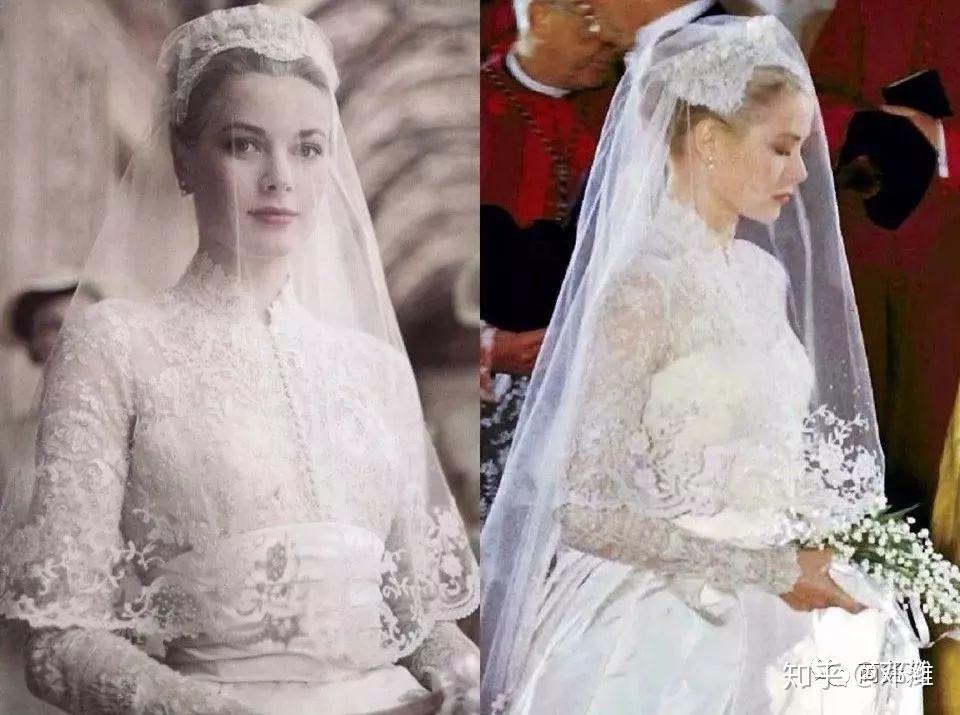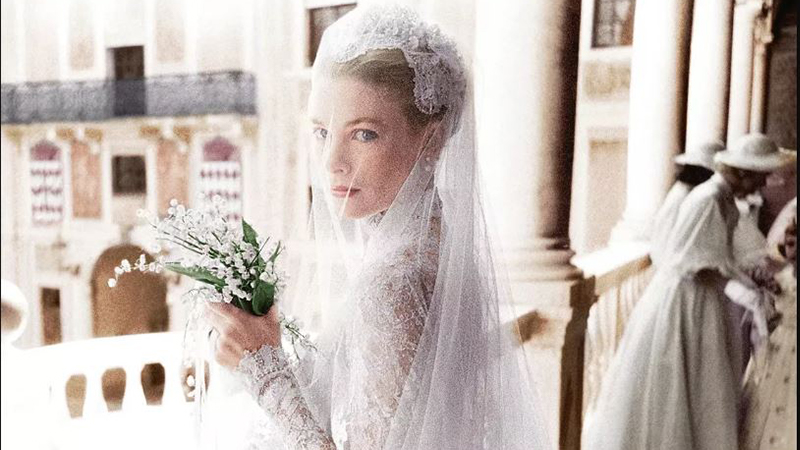On April 19, 1956, the world stood still as Hollywood royalty met European nobility in a wedding that would become one of the most iconic moments of the 20th century. Grace Kelly, the Oscar-winning actress known for her poised elegance and captivating screen presence, married Prince Rainier III of Monaco in a dazzling ceremony that combined the glitz of Tinseltown with the gravitas of royal tradition.

Grace Patricia Kelly had been a leading lady in Hollywood throughout the early 1950s, starring in classics such as “Rear Window,” “Dial M for Murder,” and “To Catch a Thief.” Her serene beauty and refined demeanor made her a favorite among directors and audiences alike. But when she met Prince Rainier during a photoshoot at the Cannes Film Festival in 1955, her life took a dramatic turn. What followed was a whirlwind romance, one that culminated in a proposal that would ultimately lead Grace to give up her acting career and embark on a new life as Her Serene Highness, Princess of Monaco.

The wedding was an affair unlike any other. Taking place over two days, it began with a civil ceremony held in the Throne Room of the Prince’s Palace of Monaco, followed by a religious ceremony at St. Nicholas Cathedral. The scale and grandeur of the event were unprecedented. More than 30 million people tuned in worldwide to watch the broadcast—an extraordinary number for the time. The guest list read like a who’s who of royalty and celebrity, with dignitaries and stars coming together in a rare confluence of political and cultural luminaries.

But it was Grace Kelly’s gown that stole the show. Designed by Helen Rose, a two-time Academy Award-winning costume designer from MGM Studios, the wedding dress was a masterpiece of craftsmanship. It featured 125-year-old antique Belgian lace, a fitted bodice with seed pearl embellishments, and a sweeping skirt of ivory silk taffeta. The ensemble took 30 seamstresses and over six weeks to complete. It was more than just a wedding gown—it was a symbol of transformation, bridging Grace’s Hollywood past with her regal future. The dress would go on to influence bridal fashion for decades and is still considered one of the most iconic bridal designs in history.

Though the wedding appeared flawless, Grace’s transition from movie star to princess was not without its challenges. Leaving behind a flourishing film career, she entered a world of protocol, diplomacy, and constant public scrutiny. Life in the Monaco palace was often lonely and isolating, with strict expectations placed on her new role. Yet Grace embraced her duties with dedication, becoming a key figure in promoting Monaco on the world stage. She engaged in philanthropic efforts, supported the arts, and raised three children—Princess Caroline, Prince Albert, and Princess Stephanie.
Her life post-Hollywood reflected a quieter, more reserved grace. No longer acting in front of the camera, she shifted her focus to charitable causes, particularly those concerning children, the arts, and the Red Cross. In 1964, she founded the Princess Grace Foundation to support emerging artists, an enduring legacy that continues to offer scholarships and artistic development opportunities to this day.

Despite her departure from the film industry, Grace Kelly remained a subject of intense media interest. Her beauty, style, and dignified composure continued to inspire generations. Fashion designers consistently referenced her look, and her name became synonymous with timeless elegance. The image of her on her wedding day—serene, graceful, and radiant—was immortalized in photographs and film reels, cementing her place in both Hollywood and royal history.
The fairy tale, however, would come to a tragic end. In 1982, at the age of 52, Princess Grace died in a car accident on the winding roads of Monaco. Her sudden passing shocked the world and prompted an outpouring of grief from admirers across continents. Yet even in death, her legacy endured. Her story continues to fascinate: a woman who left behind fame and fortune for love and duty, who redefined what it meant to be a princess in the modern age.

Grace Kelly’s wedding to Prince Rainier III was more than a celebrity event; it was a cultural phenomenon that captivated the imagination of millions. It signified the merging of two worlds—glamour and royalty, fantasy and reality. The spectacle and symbolism of the event marked a unique moment in history where Hollywood dreams met European tradition.
Today, nearly seven decades later, the wedding is still referenced in discussions of bridal fashion and royal affairs. Kate Middleton’s 2011 wedding gown, for instance, drew clear inspiration from Grace’s iconic look. Documentaries, books, and museum exhibits continue to revisit the moment, showcasing not just the beauty of the ceremony but the significance of the life that followed.

Grace Kelly remains a symbol of elegance, strength, and sacrifice. Her story is not merely one of glamour, but of transformation. From the silver screen to the marble halls of a palace, she carried herself with a grace that transcended the roles she played—both fictional and real. And while the wedding may have been the beginning of a new chapter, it was also the start of a legacy that would inspire generations to come.
In the end, the true legacy of Grace Kelly’s royal wedding lies not just in its spectacle, but in what it represented: the power of reinvention, the allure of romance, and the timeless fascination with a woman who lived—and loved—on her own terms.